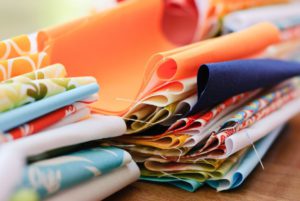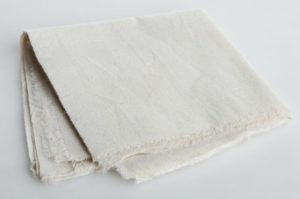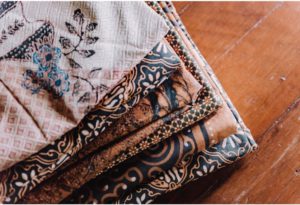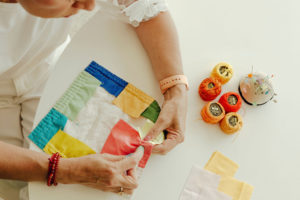Cotton fibers are often woven into a raw, high-thread-count fabric before being used to create
quilting fabric. The quilting materials are then printed and colored, giving them vibrant and
attractive designs. Finally, a unique mixture of chemicals is added to improve its quality for
quilting.

What Fabrics Are Used For Quilting?
The most common kind of fabric used for quilting is pure cotton. The raw cotton used to create a
60 square (or more) greige product serves as the source material. Fresh off the loom, raw,
untreated material is referred to as a “greige good” by this term. The number, such as 60,
denotes the precise number of threads that make up one square inch of the fabric.
A 60-square-inch piece of cloth has 30 warp threads and 30 weft threads per square inch. The
“60 square” is created by adding together all 60 threads. Quilting fabrics sometimes have
square counts of 70 or even more. The cloth is more robust and denser the higher the number.

Other Popular Quilting Fabric
Additionally, woven cotton quilting fabric could be found. Although this cloth has at least 60
threads per square inch, the weaving process is completed before the dying.
The cloth is created from pre-dyed threads. The end product is a cloth that has the same front
and back. Crisply striped or plaid designs may often be seen on woven quilting fabric.
Another common fabric type for quilting is batik. These vibrant textiles are often created from
rayon or even cotton. The cotton variants are often firmer and more suitable for a quilter’s
purposes.

Another fabric with a minimum of 60 squares often used for quilting is flannel. To make this
material seem soft, it goes through a unique procedure. It is still a formidable alternative for
quilting construction, however. It is an attractive option for a cuddly and cozy baby quilt. Last but
not least, you could find some mixed quilting fabrics. These might be labeled as quilter’s canvas
or quilter’s linen. Some producers switch out a portion of the cotton mix with other stiffer
threads, such as flax thread, to make the fabric stiffer and fuller.

How Is the Fabric For Quilting Processed?
The distinctions between quilting fabric and other garment textiles are partly due to the
processing methods used to create it. The fabric will first be colored or printed with various eye-
catching, vibrant designs. Large rolls of paper or digital printing may be used for coloring and
printing.
Traditional rolls cannot be printed on without certain restrictions. The only Pantone colors that
may be used for printing this manner are the 29 Pantone colors. On the other side, digital
printing extends the number of color palettes available for quilting fabrics. Any color combination
may be printed more crisply and clearly.
The final product’s quality will be the same for both printing methods. The pattern’s more
delicate elements are prepared to survive many iterations of usage, and the colors won’t run or
fade. The additive stage is when the most significant differences may be seen. Each producer of
quilting fabric has a different formula for its additives. These are not used with thinner textiles
used for clothing.
These chemicals improve the material’s capacity to maintain its crispness and ease of handling.
Additionally, they are designed to stop colors from bleeding and keep the fabric’s natural texture
and appearance over time.
Final Reflections
Fabrics explicitly designed for quilting projects fall under the category of quilting fabrics. From
their high cotton thread count constructions to their unique additions for durability and
performance, quilting fabrics are not your typical fabric. Although they could be more expensive,
they are a wise investment for a quilt that will endure for many years.

Contact Carolina Oneto and discover more information about quilting!


